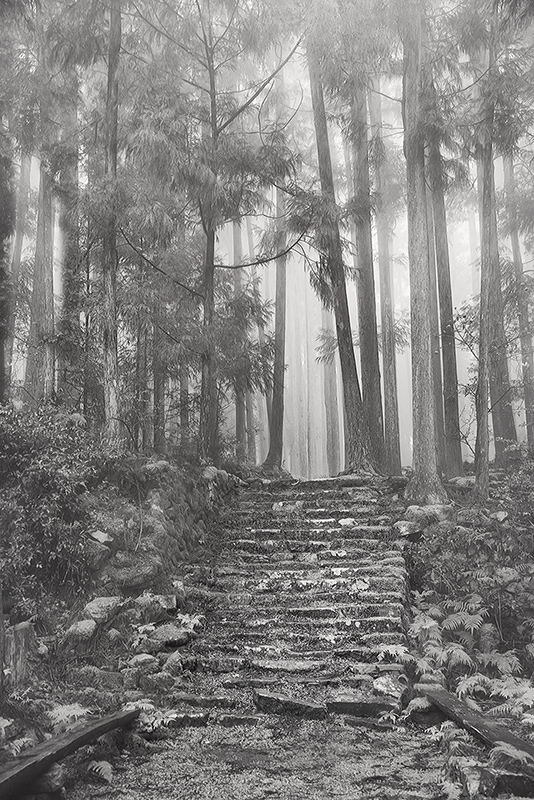Along the ancient Kumano kodo pilgrimage trail there is mostly the silence of the weather. Wind whistles through the trees and a fine mist falls drop by drop. It wasn’t always this way.
When nobles from Kyoto made the pilgrimage they would often travel with many retainers—sometimes as many as a hundred people. You see the remains of those days all along the trail, from the damp and moss-covered stone stairs to the remains of small settlements and tea houses. The tea houses would wait until they saw a party of pilgrims coming, then fire up the tea kettles and rice pots so they would have refreshments to offer.

But today the world of the Kumano kodo is an empty world, alone with its ghosts—and so different from the hustle and bustle of Japanese cities like Tokyo. There were almost no Japanese people on the trail, but one man from Tokyo I did meet was wearing a business suit, business shoes, and a winter fur-lined coat.
He was staring about him wildly at the emptiness of solitude, wide-eyed and obviously terrified and afraid of the unfamiliar surroundings of wilderness without people. I wish I could have spoken enough Japanese to have learned his story, but this was not possible.
What brought him to the Kumano kodo pilgrimage, so far from his usual haunts? Tokyo Station with its acres of platforms, trains and levels sees fourteen million passengers a day. For someone used to this volume of people, their absence must be terrifying. Why was he here? I have never seen anyone look so obviously and physically afraid. As Phyllis said when I told her about meeting this man in the wilderness along the Kumano kodo that was so alien to him, “He must have done something bad, very bad, and was atoning. Probably, he will never do it—whatever it was—again!”
Pingback: 3,600 Peaks of Kumano
Pingback: From Heaven to Hell